Antarctica is an alien world brooding on the underside of our planet.
Not too long ago my wife and I stumbled onto the Polar Museum in Cambridge, England. Pure happenstance, but we didn’t hesitate to make a stop there because we both have prior interest in the polar regions and historical expeditions. Mine was kindled four years ago with “Upon a Forest Deep,” my third story-of-the-month, and the counterpart “Within a Blinding Now.” Together they feature the final hours of the doomed 1910–1913 Terra Nova British expedition to Antarctica. While the party led by Robert Falcon Scott did reach the South Pole as planned (albeit a month too late for the prize of first place in history), none of them survived the return journey.
For that story, I’d finished my research within a couple weeks, all online except for a trip to the Los Angeles Central Library to read through a biography of Captain Oates, pages gone sepia and rippled with water damage. At home I pored over maps and photographs, Scott’s diaries, and Cherry-Garrard’s The Worst Journey in the World, an account detailing the winter before the disastrous South Pole excursion.
At no time had I considered the possibility of gawking at any of the associated objects in person. It was actually very exciting to see real gear and documents in the flesh!

Pemmican is one of the staples of the sledging rations, with Native American origins, a sort of precursor to backpackers’ meals or food for astronauts. As you can read from the packaging, pemmican is a blend of protein and fat, derived first from dried and pounded meat, then mixed into melted fat and rendered into cakes. Other rations were tea, biscuits, cocoa, butter, and sugar, with occasional delicacies like raisins and caramels. The crew also relied on their ponies and dogs for fresh meat as long as possible. Oates craved beefsteak constantly.
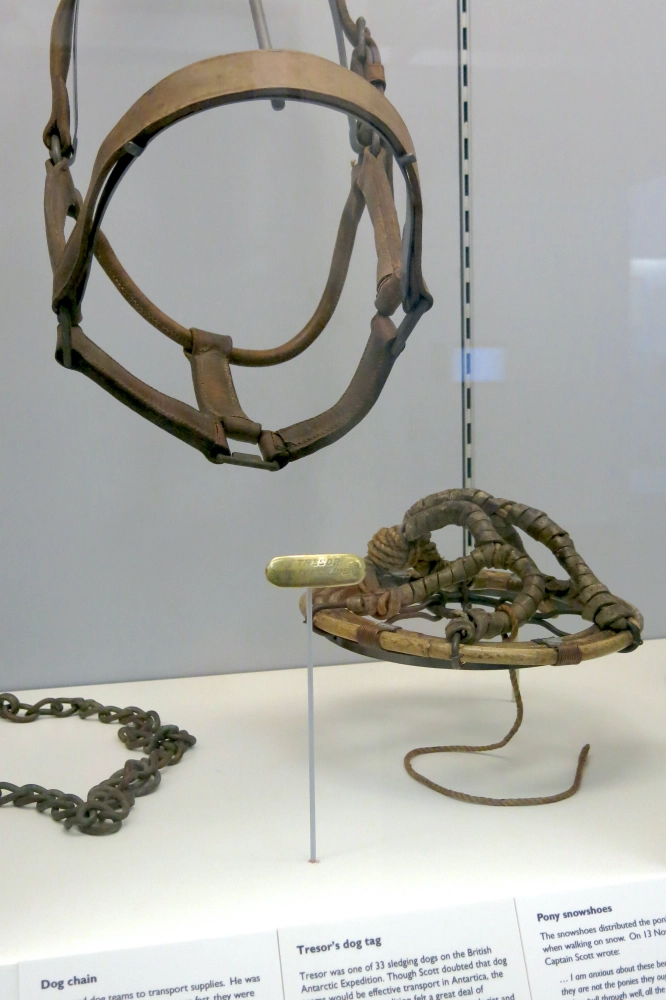
Oates was the master of ponies for this expedition. He didn’t get to pick them out (a critical problem) and was sorely disappointed with the selection. Their inadequacy brought immense stress to him. Although skeptical of the snowshoes, he couldn’t deny their effectiveness in action. The ponies had a tremendous struggle in the snow—until rigged with these baskets over their feet.

Full summer daylight assaulted the eyes as much as cutting wind and snow. Not all goggles at the museum had slits in them, but these were more striking for their unusual design. The hood with its wide flaring funnel can be adjusted to shield against the primary wind direction, while still keeping an escape channel open, when possible, for breath which would otherwise leave a buildup of ice crystals. Sometimes clothes froze solid. Melted ice trapped near the body was an annoyance and a threat.
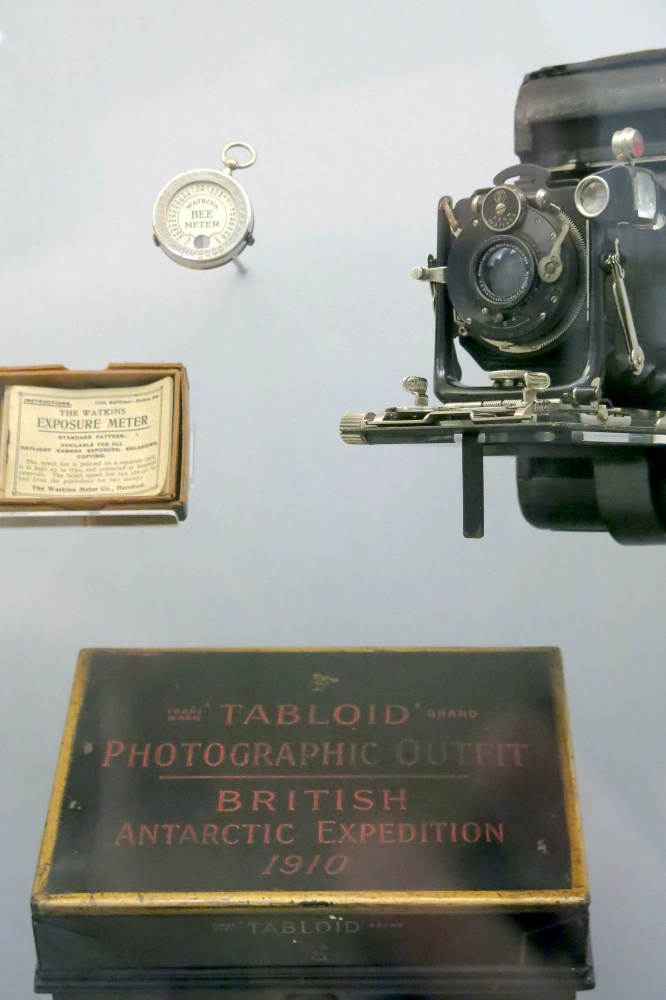
Collecting data about e.g. climate and wildlife was one of the essential purposes of the Terra Nova expedition. Oates had no great respect for science.
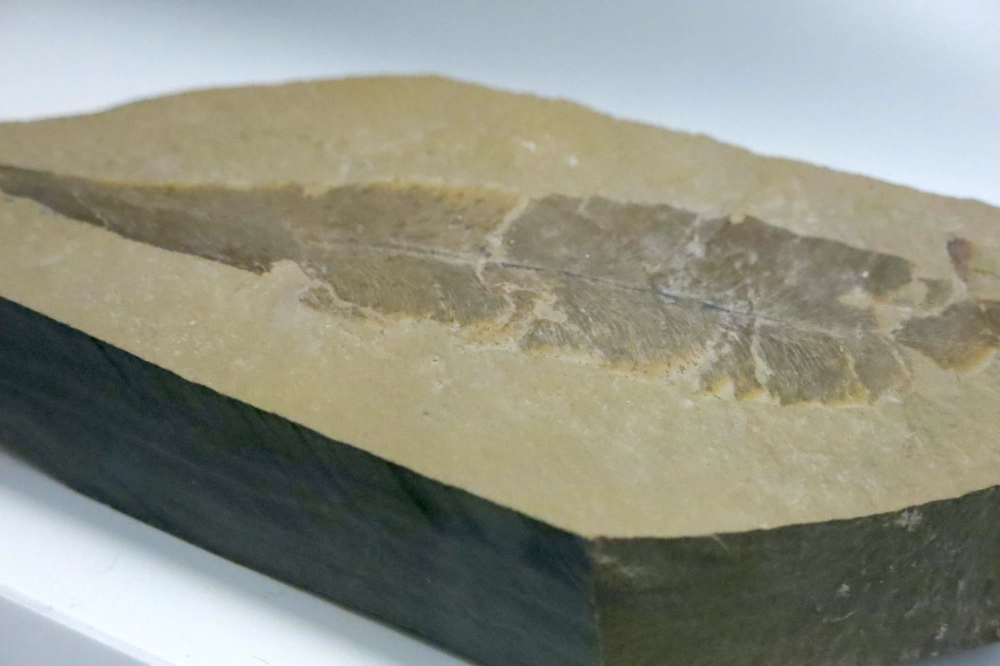
My monster/nonhuman character in the paired stories is much concerned with forests beneath the ice. I had in mind fossils like this one. They reveal a lush past for Antarctica, which remains present for a creature that can shift through time as mine does throughout the story. Scott’s expedition gathered fossils, yet I think this one was picked up a different time by a different group.
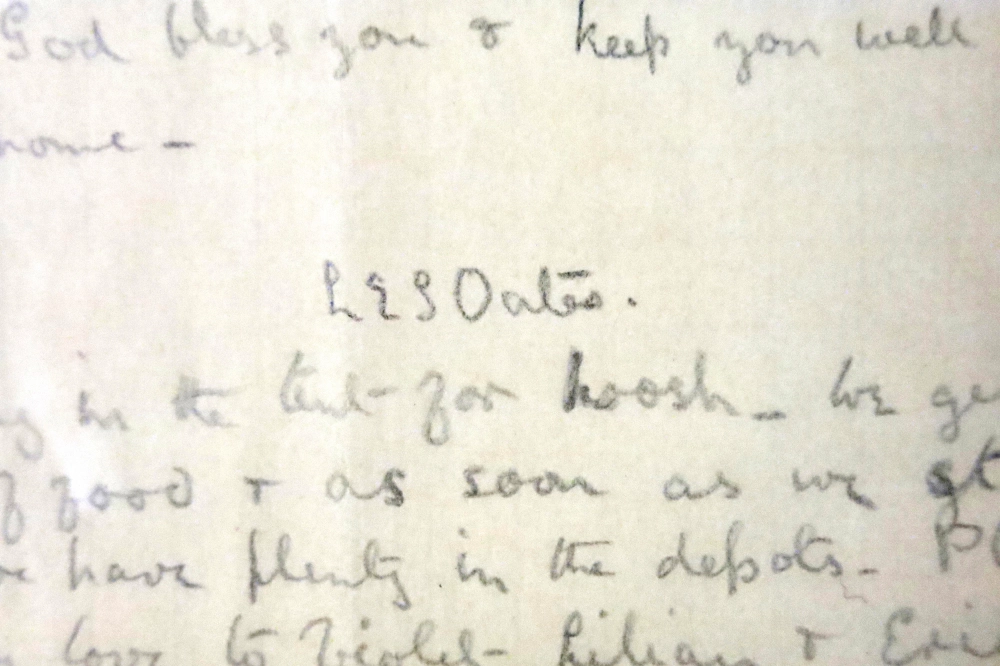
Signed L[awrence] E[dward] G[race] Oates. One of his few extant letters from the expedition, this one to his mother shares the news that Scott has just chosen Oates to join the small, select group striking inward to the Pole. Oates makes a show of good spirit despite having already suffered more exposure and sleep loss than anyone, caring for the ponies. No other letter to his mother has closed like this, with “God bless you.” Only two and a half months later, he will meet his death.
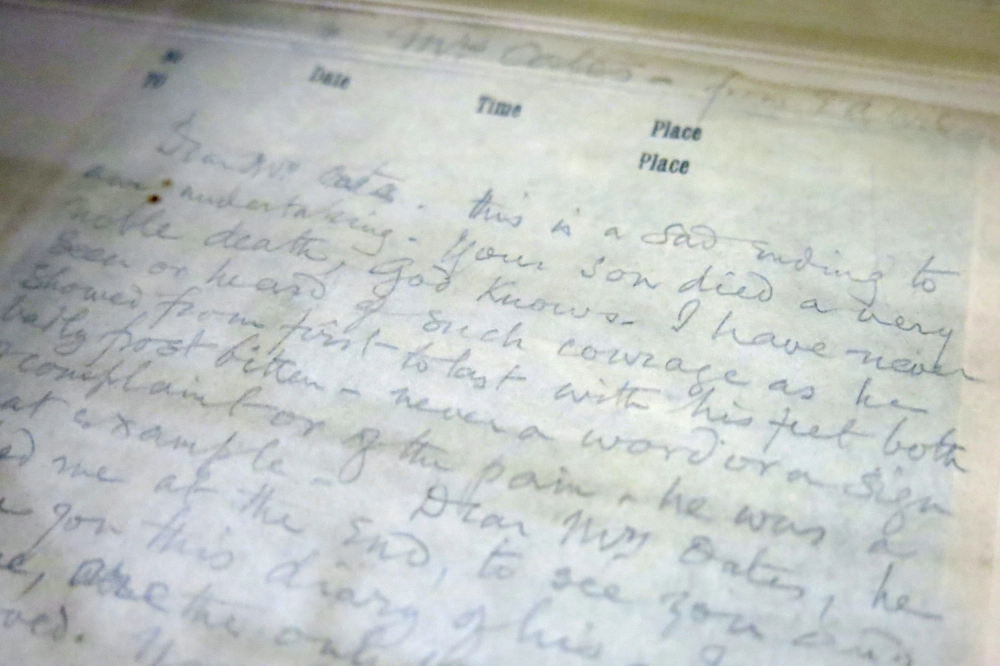
Soon after Oates died, one of his surviving companions wrote a letter to explain the tragedy to Mrs. Oates. It assures her that her son was noble and courageous to the end, “never a word or sign of complaint or of the pain” despite two “badly frostbitten” feet. Just one regret troubled Oates: he didn’t take one final chance to write his mother himself.
______
Sources
Documents, objects, and signage from the Scott Polar Research Institute (Polar Museum), University of Cambridge, England.
Limb, Sue, and Patrick Cordingley. Captain Oates: Soldier and Explorer. B.T. Batsford Ltd, 1982.